Spatial and temporal patterns of agrometeorological indicators in maize producing provinces of South Africa
- PMID: 35840590
- PMCID: PMC9287399
- DOI: 10.1038/s41598-022-15847-7
Spatial and temporal patterns of agrometeorological indicators in maize producing provinces of South Africa
Abstract
Climate change impacts on maize production in South Africa, i.e., interannual yield variabilities, are still not well understood. This study is based on a recently released reanalysis of climate observations (AgERA5), i.e., temperature, precipitation, solar radiation, and wind speed data. The study assesses climate change effects by quantifying the trend of agrometeorological indicators, their correlation with maize yield, and analyzing their spatiotemporal patterns using Empirical Orthogonal Function. Thereby, the main agrometeorological factors that affected yield variability for the last 31 years (1990/91-2020/21 growing season) in major maize production provinces, namely Free State, KwaZulu-Natal, Mpumalanga, and North West are identified. Results show that there was a significant positive trend in temperature that averages 0.03-0.04 °C per year and 0.02-0.04 °C per growing season. There was a decreasing trend in precipitation in Free State with 0.01 mm per year. Solar radiation did not show a significant trend. Wind speed in Free State increased at a rate of 0.01 ms-1 per growing season. Yield variabilities in Free State, Mpumalanga, and North West show a significant positive correlation (r > 0.43) with agrometeorological variables. Yield in KwaZulu-Natal is not influenced by climate factors. The leading mode (50-80% of total variance) of each agrometeorological variable indicates spatially homogenous pattern across the regions. The dipole patterns of the second and the third mode suggest the variabilities of agrometeorological indicators are linked to South Indian high pressure and the warm Agulhas current. The corresponding principal components were mainly associated with strong climate anomalies which are identified as El Niño and La Niña events.
© 2022. The Author(s).
Conflict of interest statement
The authors declare no competing interests.
Figures

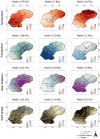
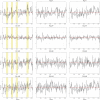
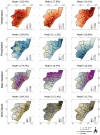

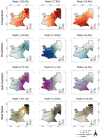
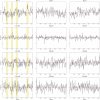

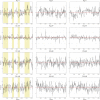
References
-
- Drolet JL, Sampson T. Addressing climate change from a social development approach: Small cities and rural communities’ adaptation and response to climate change in British Columbia, Canada. Int. Soc. Work. 2014;60:61–73. doi: 10.1177/0020872814539984. - DOI
-
- Sintayehu DW. Impact of climate change on biodiversity and associated key ecosystem services in Africa: a systematic review. Ecosyst. Health Sustain. 2018;4:225–239. doi: 10.1080/20964129.2018.1530054. - DOI
-
- Islam MS, Kieu E. Tackling regional climate change impacts and food security issues: A critical analysis across ASEAN, PIF, and SAARC. Sustainability. 2020 doi: 10.3390/su12030883. - DOI
Publication types
MeSH terms
LinkOut - more resources
Full Text Sources

